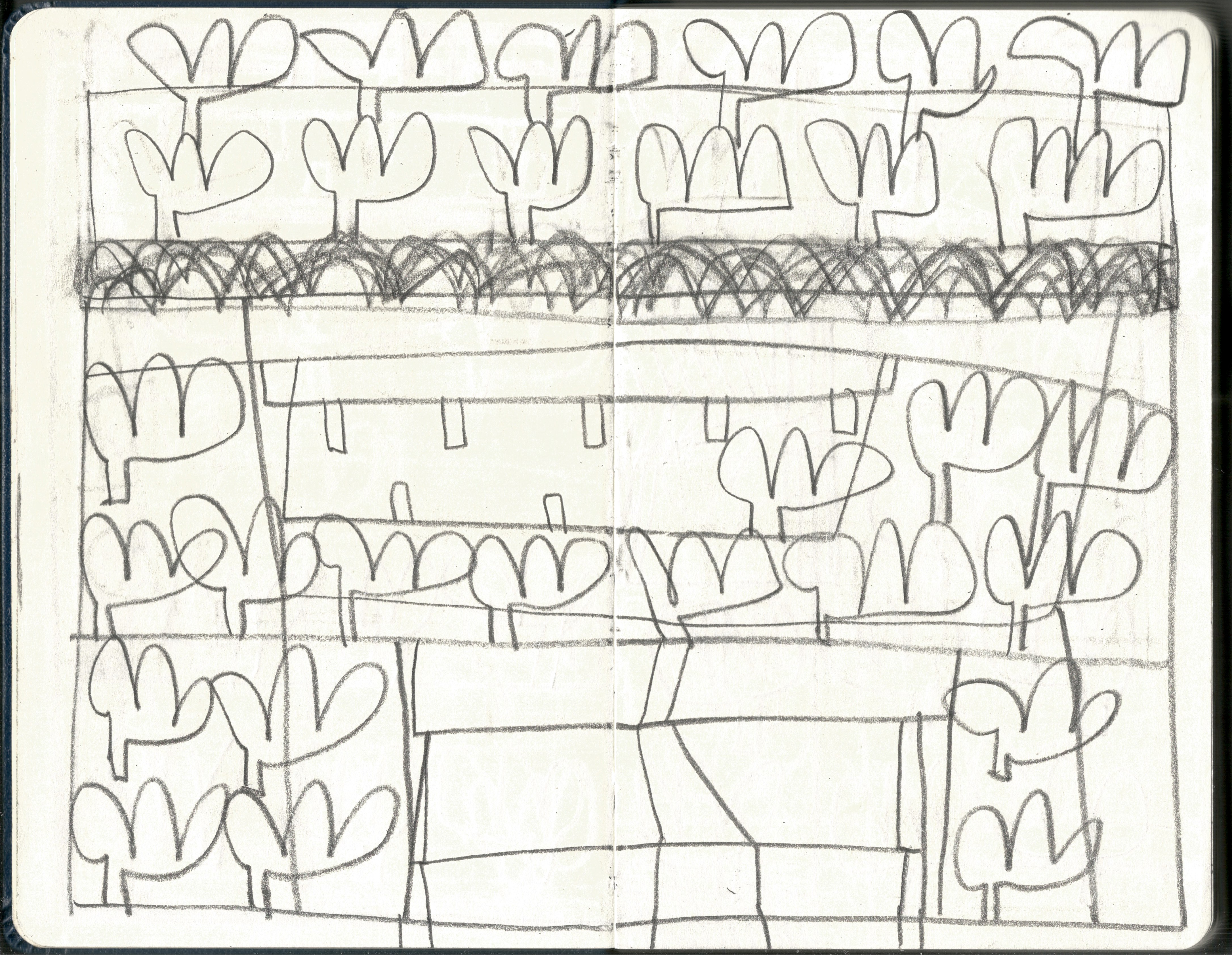When Anne Davies brought us the paintings for her window at The Rowley Gallery she also brought a couple of small Moleskine sketchbooks, both crammed cover to cover with rhythmical drawings like musical notation, each one a potential painting waiting to be sung into life once the book is opened. This is the first double-page of the second book, page after page riffing on a theme of trees. There are 90 pages, all as energetic as this one, some maybe more so, each full of trees, parks, orchards, woods. Continue reading “A Book Of Trees”













